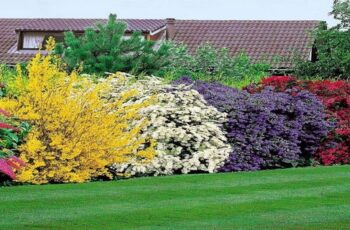Ad Blocker Detected
Our website is made possible by displaying online advertisements to our visitors. Please consider supporting us by disabling your ad blocker.
Fertilizing pumpkins is important, but it’s not the only thing to do.

Pumpkins are heavy consumers, even more so than tomatoes or corn. They need a lot of space, a ton of water, and some fertilizer if you want to harvest more than a decoration.
Fertilizing your pumpkin patch is extremely important as it promotes strong root development and stimulates flower and fruit production. As with any garden plant, you will need to find a good balance between nitrogen, phosphorus, and potassium.
Here’s how you can get the most out of pumpkins growing in your own garden:
1. Remove most flowers and fruit.
It all depends on your pumpkin harvesting goals, but at some point, you have to decide if you want one large pumpkin, or if you would be happy with two or three smaller, more manageable-sized pumpkins.
Since each female flower has a chance of becoming a pumpkin, you’ll want to check on the progress of fruit development after the first flowers appear. If you leave them all to chance, you might end up with lots of smaller pumpkins.
All you have to do to correct this is remove any excess flowers or fruit by hand.
2. Hand pollinate pumpkin flowers.

Pumpkin flowers are normally pollinated by insects. With a drop in insect numbers, you can never be too sure that your plants will receive enough attention from nature.
Hand pollination is quite easy. Remove the petals from the male flowers to expose the pollen-covered stamens and dab them onto the female pistil. If you prefer, you can also use a cotton swab or an old paintbrush to transfer the pollen from the male flower to the female flower.
3. Don’t plant pumpkins too close together.

I know, it’s easy to get carried away planting pumpkins. Seeing so much open space almost necessitates sowing more seeds or moving the nests closer together to accommodate as many plants as possible. As with most garden vegetables, there are spacing guidelines for good reason.
When you plant pumpkins too close together, there will be competition for nutrients, water, and sunlight. In the quest to be the greatest, they will consume all three with enthusiasm.
Overcrowding stresses pumpkins, and you don’t want that to happen. If they become overloaded, the plants may drop their flowers or fruit, resulting in a smaller harvest.
Large varieties of pumpkins require a minimum distance of 15-20 cm between nests. The rows should be spaced 15 to 25 cm apart. The planting distance varies from cultivar to cultivar, always read the planting recommendation on the back of the package.
4. Fertilize pumpkins – more than once!
You don’t need chemicals to grow a lush garden. What you need to do, however, is educate yourself on organic fertilizers. It will definitely put you on the path to bigger pumpkins and bigger harvests overall.

So if you want huge harvests of pumpkins, every two weeks you should fertilize your pumpkin patch with compost tea, rotted manure, or organic fertilizer. You may already have some fertilizer on hand, quickly read the list and see.

